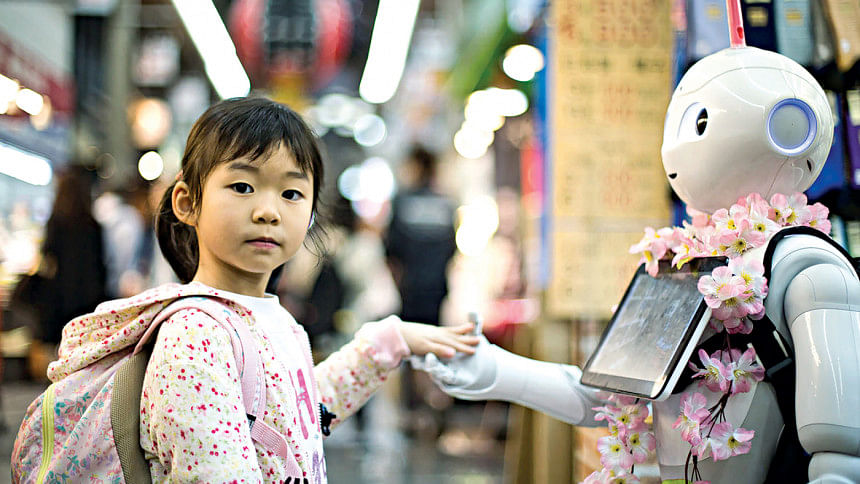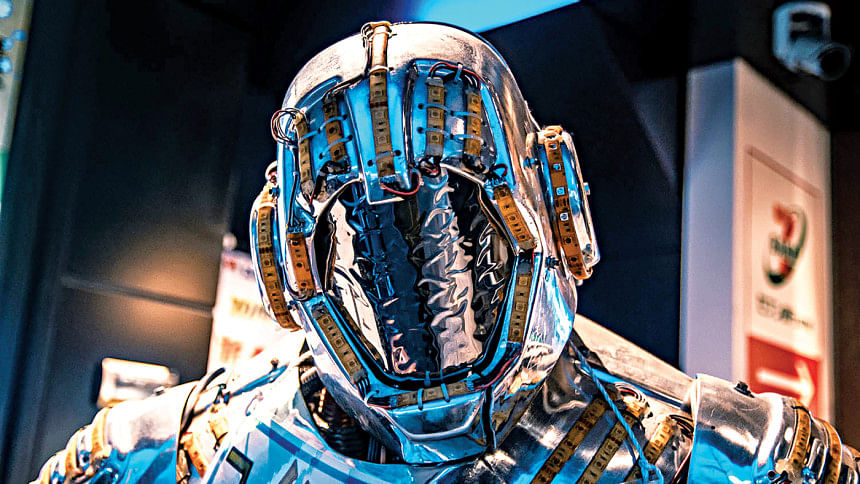Rise of the robots in pandemic Japan

Helping frontline workers
Japan has started using hotels to house COVID-19 patients whose symptoms are too mild to get hospitalized, but it can be dangerous if people become careless. To lighten the burden on the medical staff, Softbank's Pepper robots have been deployed in the hotels rented by the government. Pepper, the famous humanoid robot, is now all ready to help frontline workers wearing a white surgical mask. It greets and reminds the patients who are kept in isolation to check the temperature on time and delivers recorded warm messages for the patients who are mentally devastated due to the situation. Meanwhile, Whiz, a cleaning robot, is on a mission to reduce infection risks by cleaning the risky areas for non-COVID-19 people, trying to ensure a safe environment. The robots are minimising the chance of getting exposed to coronavirus for the medical workers. They can now use their potential in more complex cases.

Graduation ceremony amid a pandemic
Can coronavirus put a halt to a graduation ceremony, considered to be the most important event for every student? Yes, but no. Students of Business Breakthrough (BBT) University found a unique way to attend their graduation ceremony without violating the lockdown. The 'Newme' robots by ANA Holdings wearing graduation caps and gowns with tablets on their faces replaced the students in BBT's graduation ceremony this year. Students showed their faces on the tablets using Zoom and controlled the robots via their laptops. They were able to receive their certificates in a public place and have their graduation pictures while practising social distancing through these avatar robots.
The human contactless disinfection process
An unprecedented population decline has boosted robot development in Japan. Mira Robotics developed 'Ugo' to reinforce the shrinking labour force. But due to the persisting COVID-19 threat, it has come up with a new feature that is a hand attachment. It uses UV rays to kill viruses on doorknobs. Ugo can also do the cleaning of the unpleasant and infectious places such as toilets and rooms used by COVID-19 patients'.
The surfaces of public places are more likely to be responsible to spread communicable diseases and viruses. So what about creating a high-tech railway station with cleaning robots to minimise human contact diseases? This is what East Japan Railway Co. is planning to do. They are on the way to appoint the cleaning robots, developed by Nippon Signal Co. and Cyberdyne Inc. to disinfect the station surfaces, for example, benches and handrails without the assistance of human staff. 'Clinabo CL02', the autonomous cleaning robot has three-dimensional cameras and sensors to complete this cleaning job. The robots were on a trial run and they have proved their expertise in cleaning life-threatening viruses. However, it may take some time to develop these robots. The company has no plan to introduce the robots until March 2025.
Delivery services by self-driving robots
ZMP Inc. is all ready to start a trial run of the DeliRo autonomous robot to deliver food near the Shinagawa train station. The urge to have contactless delivery services has led to ZMP and other autonomous robot firms to explore this independent robotic feature. Customers will need to place the order using a tablet, make a cashless payment, and the robot will deliver the food within a designated test area for now. DeliRo with its 1-meter height can carry 50 kilograms payloads and uses its advanced self-driving technology for the home delivery service. This autonomous robot can travel a maximum 6 kilometres per hour. The firms collaborating with the government are trying to create a safe traffic framework for these autonomous robots as the existing legal framework does not have proper instructions for these self-driving robots. People are already excited to try the human contactless delivery service that can ensure social distancing and reduce the pressure on the declining labour force.

 For all latest news, follow The Daily Star's Google News channel.
For all latest news, follow The Daily Star's Google News channel. 



Comments